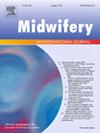What do safety and risk mean to women who choose to birth at home? A systematic review
IF 2.6
3区 医学
Q1 NURSING
引用次数: 0
Abstract
Introduction
Despite clear evidence to support the safety and efficacy of homebirth, the concept challenges the almost universal belief that hospital is the safest place to give birth. Homebirth remains largely unsupported around the world due to prevailing beliefs and constructs surrounding risk and safety. Despite barriers to access, women continue to choose home as a place to birth.
Methods
A systematic review of qualitative research was conducted to explore and understand women's views on what constitutes risk and safety in labour and birth for those who choose to birth at home. All studies were evaluated for quality and relevance. Reflexive thematic analysis was used to identify themes.
Results
Analysis of the 29 papers included in this review identified three main themes: risk of hospital birth, risk of homebirth, and safety of homebirth, and convey that women who choose to birth at home view their social, emotional, psychological and spiritual safety as highly important, with homebirth protecting and respecting these factors. For the women in the studies we reviewed, physical safety was enhanced through having the expertise of a midwife present at their birth. Participants considered the cultural paradigm within hospital services to focus on care for the physical body and not the whole person, which had the potential to cause psychological and physical harm.
Discussion
This review demonstrated that women who choose to birth at home assess risk and safety differently to the way health care institutions assess these parameters. These findings will be of interest to maternity services and educators of maternity care practitioners.
求助全文
约1分钟内获得全文
求助全文
来源期刊

Midwifery
医学-护理
CiteScore
4.50
自引率
7.40%
发文量
221
审稿时长
13.4 weeks
期刊介绍:
Midwifery publishes the latest peer reviewed international research to inform the safety, quality, outcomes and experiences of pregnancy, birth and maternity care for childbearing women, their babies and families. The journal’s publications support midwives and maternity care providers to explore and develop their knowledge, skills and attitudes informed by best available evidence.
Midwifery provides an international, interdisciplinary forum for the publication, dissemination and discussion of advances in evidence, controversies and current research, and promotes continuing education through publication of systematic and other scholarly reviews and updates. Midwifery articles cover the cultural, clinical, psycho-social, sociological, epidemiological, education, managerial, workforce, organizational and technological areas of practice in preconception, maternal and infant care.
The journal welcomes the highest quality scholarly research that employs rigorous methodology. Midwifery is a leading international journal in midwifery and maternal health with a current impact factor of 1.861 (© Thomson Reuters Journal Citation Reports 2016) and employs a double-blind peer review process.
 求助内容:
求助内容: 应助结果提醒方式:
应助结果提醒方式:


